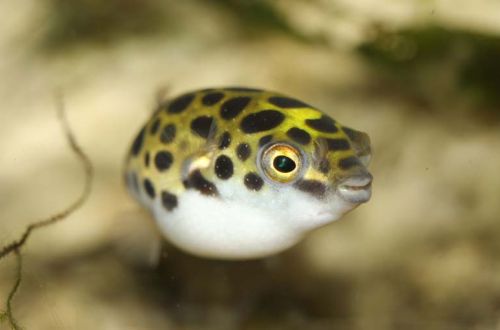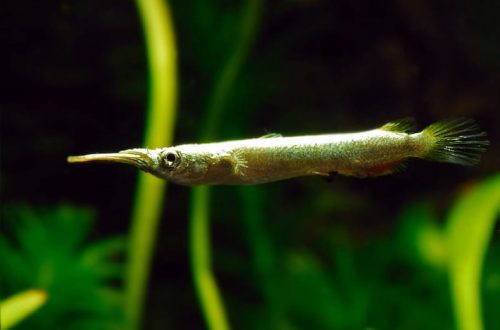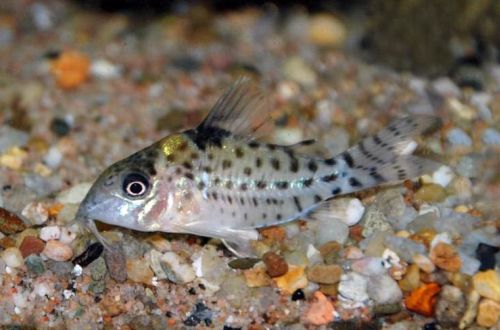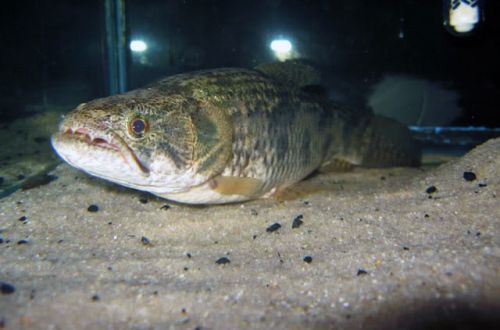
Tetradon green
Tetradon green spotted, scientific name Dichotomyctere nigroviridis, belongs to the family (Puffers). It belongs to the group of Fish-balls, which are famous for the fact that in case of danger they take in water and swell, acquiring a characteristic shape. It is worth noting that different species have different degrees of “bloat”. The inhabitants of the seas have achieved the greatest success in this, rather than their freshwater relatives.

Contents
Habitat
The fish is originally from Southeast Asia, the natural habitat extends over vast expanses from Indonesia to China. Adult individuals inhabit various biotopes, including brackish coastal zones, river estuaries. Juveniles are found exclusively in brackish shoreline environments.
Description
Adult individuals reach a length of up to 17 cm. In aquariums, they are usually somewhat smaller and grow on average up to 14 cm. It has a pear-shaped body shape that is classic for this group of fish. The outer integument is dotted with small needles, which are pressed to the body in a calm state, but in the case of “inflating” they rise.
The body pattern consists of rounded black spots on a yellow background, which, at a certain angle of incidence of light, casts green. The belly is white. Fins are translucent.
Behavior and Compatibility
Territorial fish, prefers a solitary lifestyle. Adults are hostile to relatives and other species. They attack those who cross their borders. Given the presence of sharp double teeth that can split the shell of crabs, Tetradon green spotted can cause serious injury, and in some cases even eat smaller neighbors in the aquarium. For this reason, it is recommended to keep only one fish in a small tank.
Young Tetradons are more calm and can be in groups until they grow up, including with representatives of other species.
Food
In nature, they feed on almost everything that they can find or catch. Often, various crustaceans and mollusks become prey. To cope with a strong shell and shell, this group of fish have developed teeth that grow throughout their lives, compensating for natural grinding.
In a home aquarium, it is recommended to serve appropriate foods, such as shrimp, snails, as well as earthworms, large bloodworms. Can be accustomed to dry, frozen food.
Important – the daily diet should include a small amount of plant components.
Brief information:
- The volume of the aquarium – from 150 liters.
- Temperature – 24-28°C
- Value pH — 8.0–8.5
- Water hardness – medium and high hardness (15-25 dGH)
- Substrate type – any
- Lighting – moderate
- Brackish water – no
- Water movement is weak
- The size of the fish is up to 17 cm.
- Nutrition – any food with a high protein content
- Temperament – aggressive
- Single content
Maintenance and care, arrangement of the aquarium
For one adult fish, an aquarium with a volume of 150 liters or more is required. The design does not matter and is selected based on the characteristics of the Tetradon morphology and the hydrochemical composition of the water.
If it is not possible to regularly feed armored crustaceans and mollusks with shells, then the design should provide for coral sand, limestone fragments that the fish could “chew”.
With the long-term content of Tetradon green spotted, it is necessary to provide an alkaline composition of water of high hardness, or to recreate brackish conditions – about 8–10 gr. salt per liter of water.
In such an environment, a limited number of aquatic plants successfully grow, which also makes its own adjustments when decorating an aquarium.
Given the diet, maintaining high water quality is of particular importance. In this matter, you should not rely solely on the operation of the filtration system. It is necessary to regularly remove uneaten food debris and replace part of the water with fresh water weekly.





